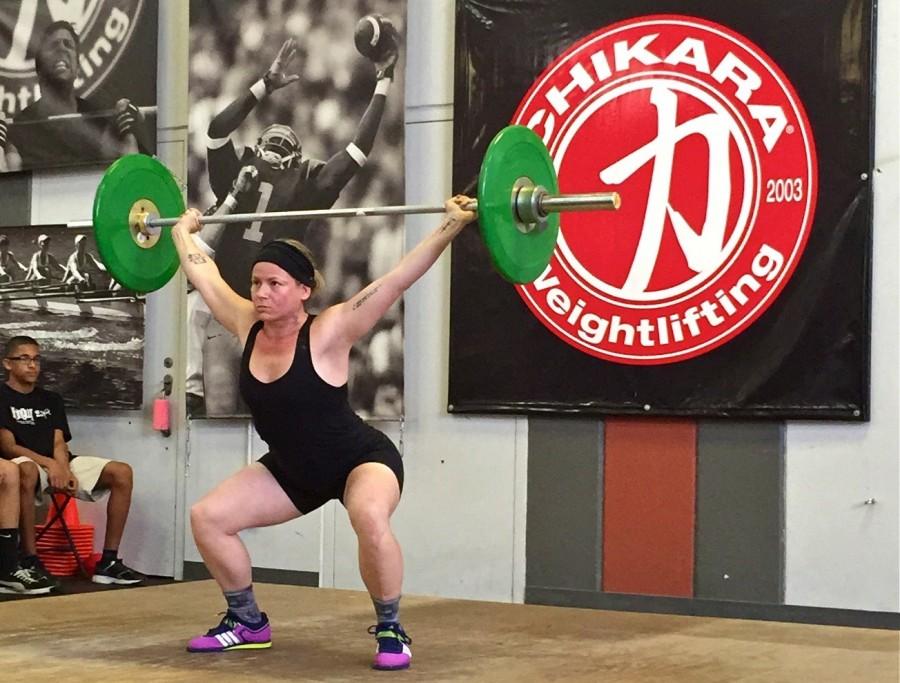Dancer sets the barre higher
DBHS Teacher Kari Simonson is pursuing a new passion in life: weightlifting. She has already competed in two events and plans to compete in a national tournament.
February 25, 2016
Ballet barres at school, iron bars at home. Diamond Bar High School dance teacher Kari Simonson, who started weightlifting in June, is not only a dance enthusiast, but also a dedicated weightlifter.
“I didn’t think it could be that hard,” she said. “I was trying to show my husband how easy it could be, but I was so wrong.”
Simonson spontaneously decided to give weightlifting a first try after finding a barbell among the weight equipment her husband, who owns a strength and conditioning gym, stored in their garage.
“I just picked it up thinking this ‘couldn’t be too hard to do,’ I had no idea what I was doing,” Simonson said. “Then I kind of just fell in love with it, because there’s a whole technique behind it, kind of like dance, which is why I think it kind of appeals to me.”
Simonson soon started increasing the weights of the bars she used to practice, to the point where she realized she needed a coach. Prior to weightlifting, Simonson had never worked with a coach before. However, she soon realized that in addition to helping her with the new sport, working one on one with a professional has allowed her to grow and develop as a dance teacher as well.
Currently, Simonson trains in a gym once or twice a week with her coach, Simon Kuang, a professional who nearly completed in the Olympics but was affected by a shoulder injury. At home, she practices weightlifting four times a week.
There are two primary lifts in Olympic weightlifting: snatch and clean-and-jerk. Simonson’s max for the snatch is 48 kilograms, or 106 pounds, while her clean and jerk is 63 kilos, or 104 pounds. Furthermore, her back squat lift is 55 kilos, 121 pounds.
“It doesn’t matter about how much you can lift, it doesn’t matter about the numbers… I’m almost 40 years old and I’ve been the strongest I’ve ever been in my life,” Simonson said.
As of now, Simonson has competed in two weightlifting competitions, and has an upcoming event in April. After her third competition, she plans to attend the National Masters Weightlifting Championships. Since the event is divided by age group and weight, her age qualifies her in the masters athlete category.
“If someone would have told me a year ago that I would have been doing this, I would have laughed,” Simonson said, “I’ve always joked that ‘I’m not a gym person, I’m not an athlete.’ Dancing is a sport, but I’ll never consider myself ‘training to be an athlete.’”
Although weightlifting appears to be a dangerous sport, if done correctly, the risk of injury is very low.
Physically, Simonson has only had problems with tendonitis in her shoulder, a pre-existing injury that had already affected her prior to weightlifting. Mentally, however, the sport has impacted her enormously.
“The minute you get it in your head that you can’t do it, then it’s exactly what you’re body will do,” Simonson said. “If it’s taught me anything, it’s that your body is so much more powerful than you think it is, and it’s all mental.”
The similarity between the principles for dance and weightlifting have further inspired Simonson to become a better dancer and teacher.
“It’s been interchangeable, dance has helped with my weightlifting because of my body awareness and my mobility. Weightlifting has helped my dancing tremendously, it tests my strength, my control, my body awareness on the other side, and my power,” she said.
Despite the large amounts of the time, effort, and work she has put into weightlifting, Simonson fully advocates for others to try the sport as well.
“I don’t think you really know how strong you are because the bar, or the iron, will tell you exactly how you are. Nobody else outside can tell you exactly how life is, people will say one thing, you can do one thing, but the bar will tell you the truth,” she said. “You can’t hide from the iron.”




